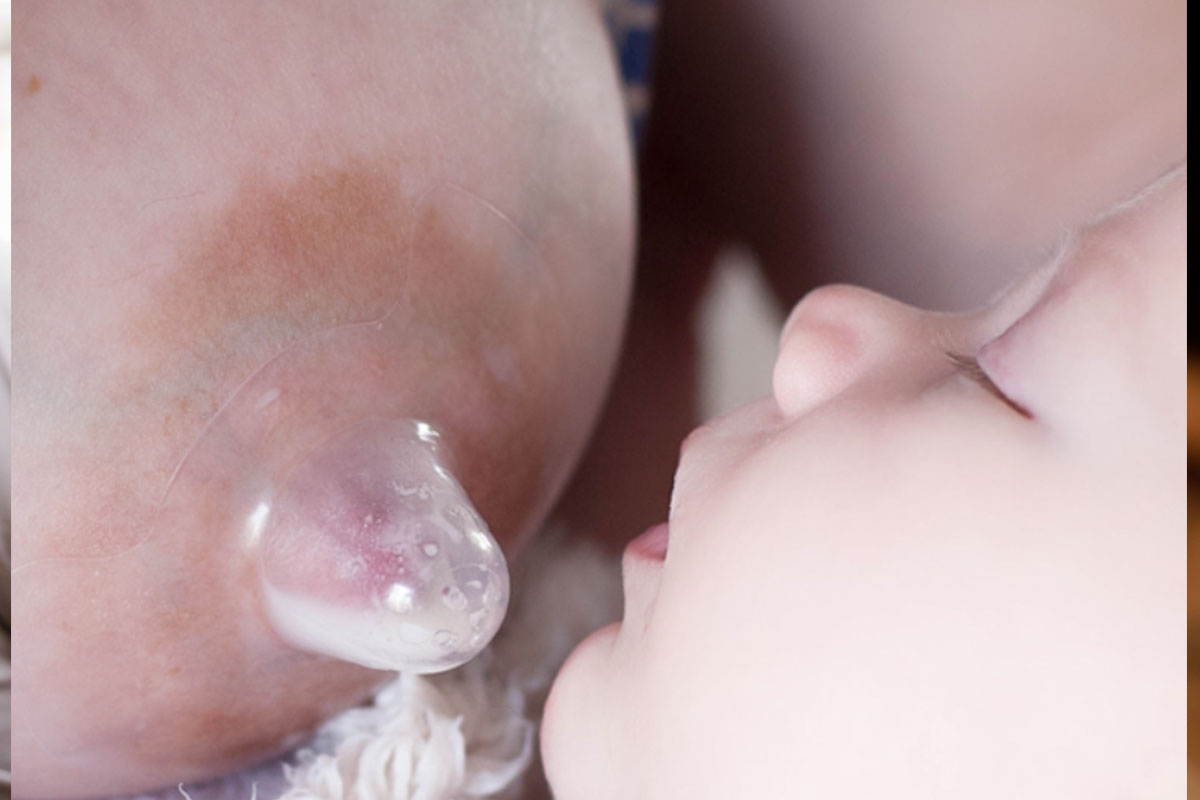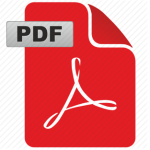
 Download this article as a pdf. (In Spanish)
Download this article as a pdf. (In Spanish)
Please do not print multiple copies of this leaflet as we are a small charity and leaflet sales support our work.
What is a nipple shield?
A nipple shield is a flexible silicone nipple that is worn over the mother’s own nipple during breastfeeding.
When are they used?
Nipple shields can help establish breastfeeding with some babies who seem to have difficulty achieving and/or maintaining attachment to the breast. However, very few benefit from using a nipple shield. Please consult a breastfeeding counsellor or health professional for one-to-one support before you use a nipple shield. A nipple shield can be a temporary solution but not a permanent fix to an underlying problem. They may affect transfer of milk to the baby which may contribute to poor weight gain and health problems for both mother and baby.
What might cause my baby to have difficulty with attachment?
Other reasons a shield could be used:
Before using a nipple shield, consider:
When breastfeeding is uncomfortable, using a nipple shield can feel like a quick fix, but shields are not a substitute for finding qualified breastfeeding support. If there is an underlying latching problem, adding a shield on top can risk blocked ducts and mastitis, supply reduction, and a baby not getting enough milk. Feeds can end up being long and unsettled and baby may take in more air. When the shield is removed, the underlying problems remain, and may even be worse as the baby has become accustomed to using the shield. Always try and find qualified help if breastfeeding is uncomfortable or challenging.
Care
Wash the shield with hot soapy water, rinse with clean water, dry carefully and store in a clean container.
Choosing a shield
Nipple shields are sized according to the diameter of the base of the mother’s nipple. A poorly fitting shield can cause problems including reduced milk transfer and pain.
In the U.K., the standard sizes are 16mm (small), 20mm (medium) and 24mm (large). A larger 28mm size is available online but can be difficult to find.
The size of shield you use is not the same size as the pump funnel you use. Shields are a closer fit. Many shops will only sell one size and you may have to shop online to get a wider selection.
A ‘contact’ nipple shield has a cut away piece that allows baby’s nose or chin to remain close to the breast. This is preferable to a shield where the baby’s nose is pressed against plastic.
How to use a nipple shield
It’s often helpful to place your baby in skin to skin contact well before you attempt a feed. This will stimulate baby’s instinctive feeding behaviours and make attachment to the breast more likely to be successful.
First, try latching the baby without the shield if you feel you can. How long you spend trying to latch effectively without the shield is a very personal decision and will depend on how long ago the baby fed, the support you have, and how breastfeeding has been going in the past.
Attachment
Attachment technique is still important with a shield. Don’t just poke the shield teat centrally into baby’s mouth. Baby should be held close, mouth wide open and chin in contact with the breast. Once attached, you should notice their chin moving deeply to show active swallowing and you will often hear some swallowing at the beginning of a feed.
Towards the end of the feed (when baby’s swallowing slows) it is a good idea to use breast compression while baby suckles to increase the milk and fat transfer to the baby. Offering baby both breasts at each feed will mean baby gets more milk.
The nipple shield is a projection of the nipple so, when the baby unlatches, it should look well rounded, just as though baby had a good latch directly at the breast. You should see milk in the shield when baby comes off. As using a shield is often associated with reduced milk transfer, it can be recommended to express in addition, to help protect your supply. Your breastfeeding counsellor or health professional can support you to consider how often this is needed, depending on how things are going.
It’s a good idea to keep an especially close eye on baby’s bowel movements and urine output while you’re using a nipple shield, as these give an indication of milk intake. Baby should have about three tablespoon-sized yellow, grainy stools in 24 hours (after the fifth day) and have at least six wet nappies.
If baby is discharged from hospital using nipple shields, their progress should be closely monitored by the community midwife or health visitor.
Weaning from a shield
Be sure not to make this a battle with your baby, or they will resist more. Don’t obsess with weaning off the shield to the point that you are unhappy with breastfeeding. As long as your baby is gaining weight well, there is no need to rush into trying to wean them from the shield. Don’t cut down a shield to wean a baby off it — this practice is no longer recommended.
You may be able to remove the shield part way through a feed and continue without. You may only use a shield on one breast, or for the first few minutes. Some babies need only one or two sessions with the nipple shields, while others may need more.
Keep trying as often as you can and give it some time. Your baby might be more receptive to feeding without the shield when they are less hungry or sleepy. Some continue to use a shield for the duration of their breastfeeding experience, but most are able to stop using the shield after only a short time if they wish to.
Be patient while you work through this time of transition. Breastfeeding with a shield is still breastfeeding.